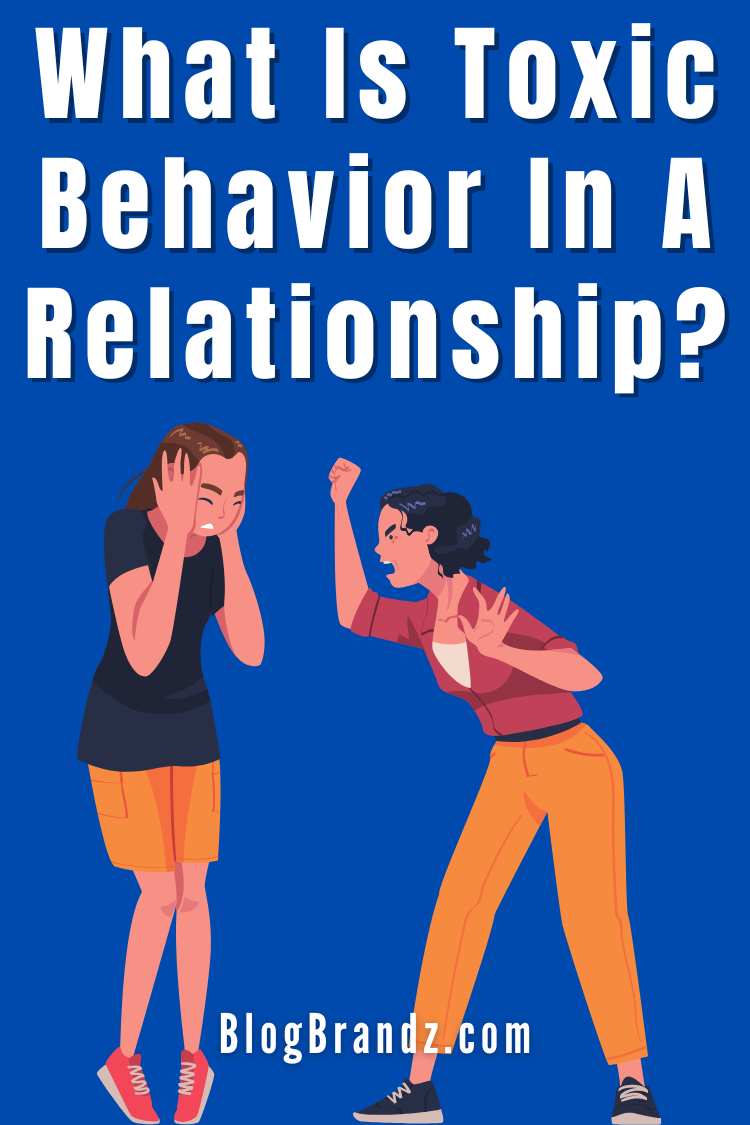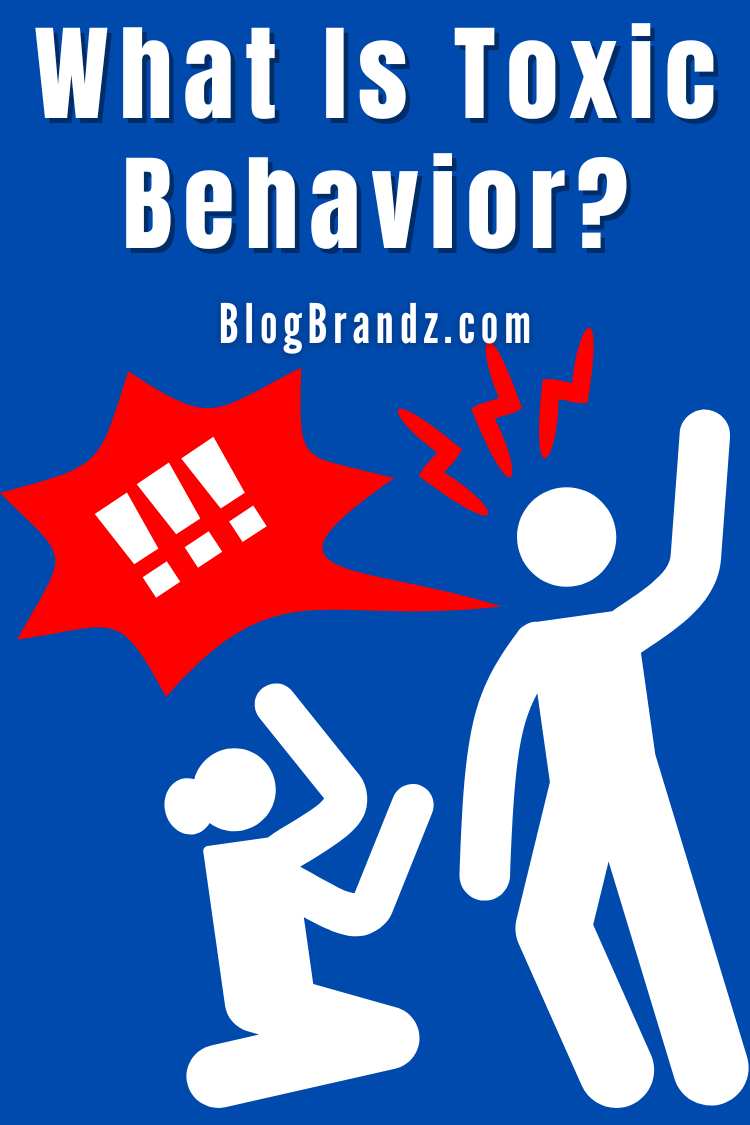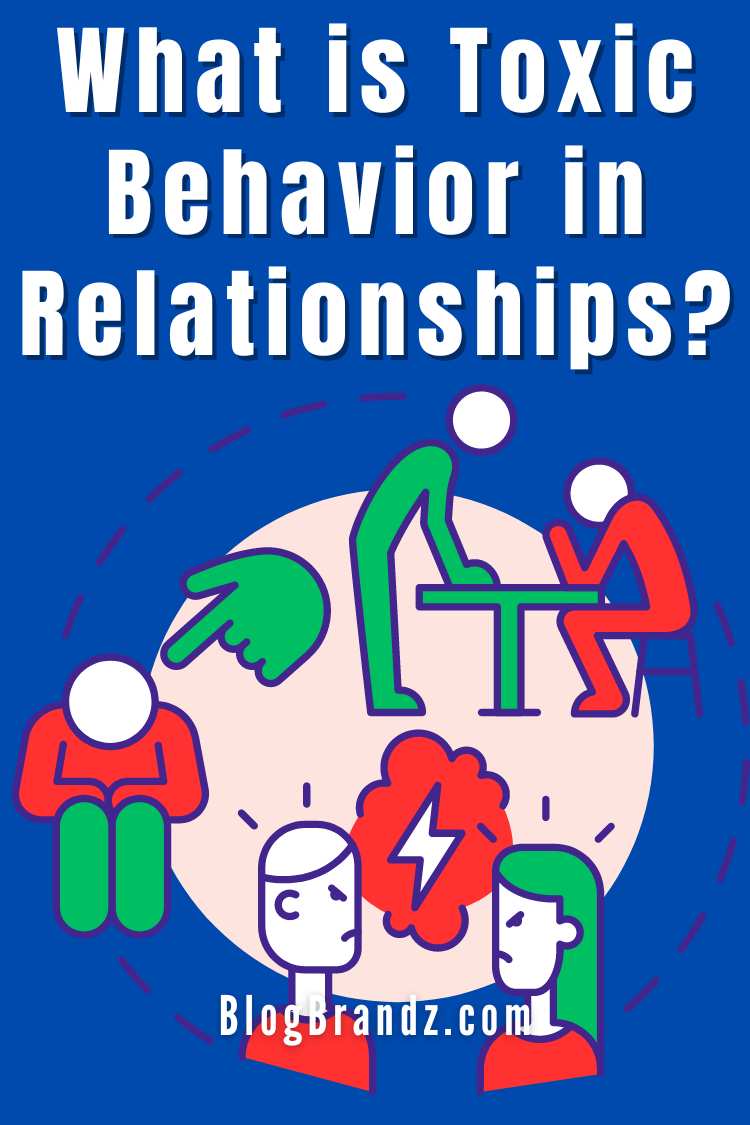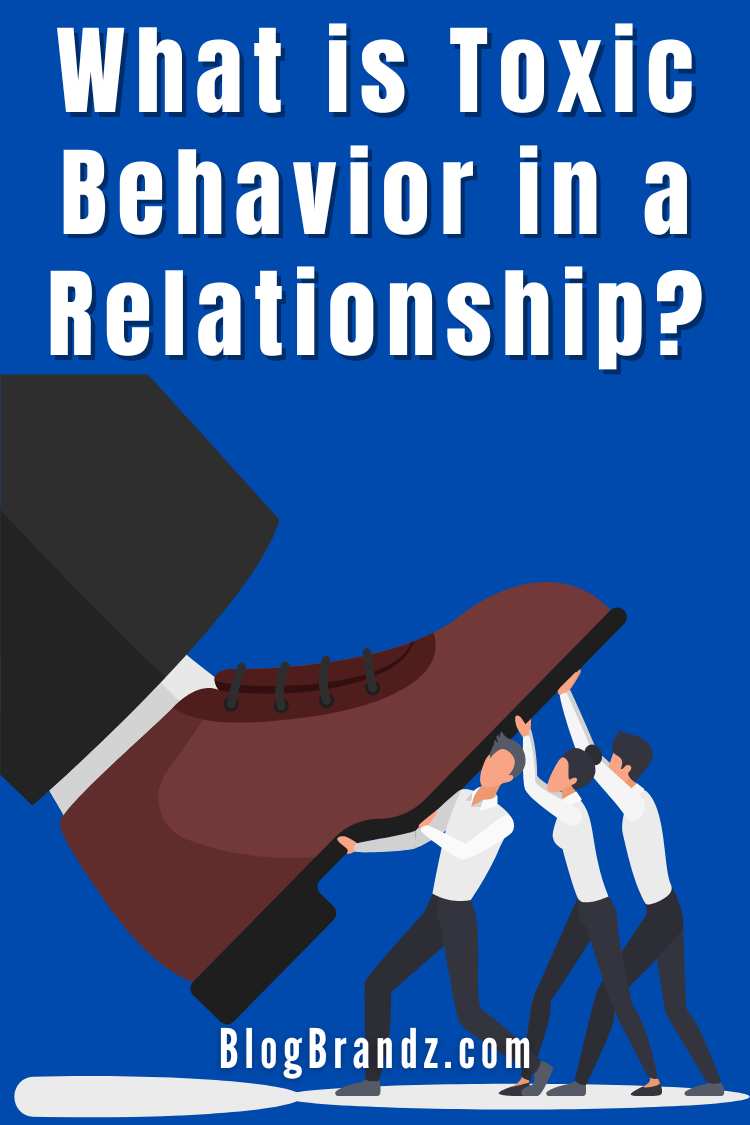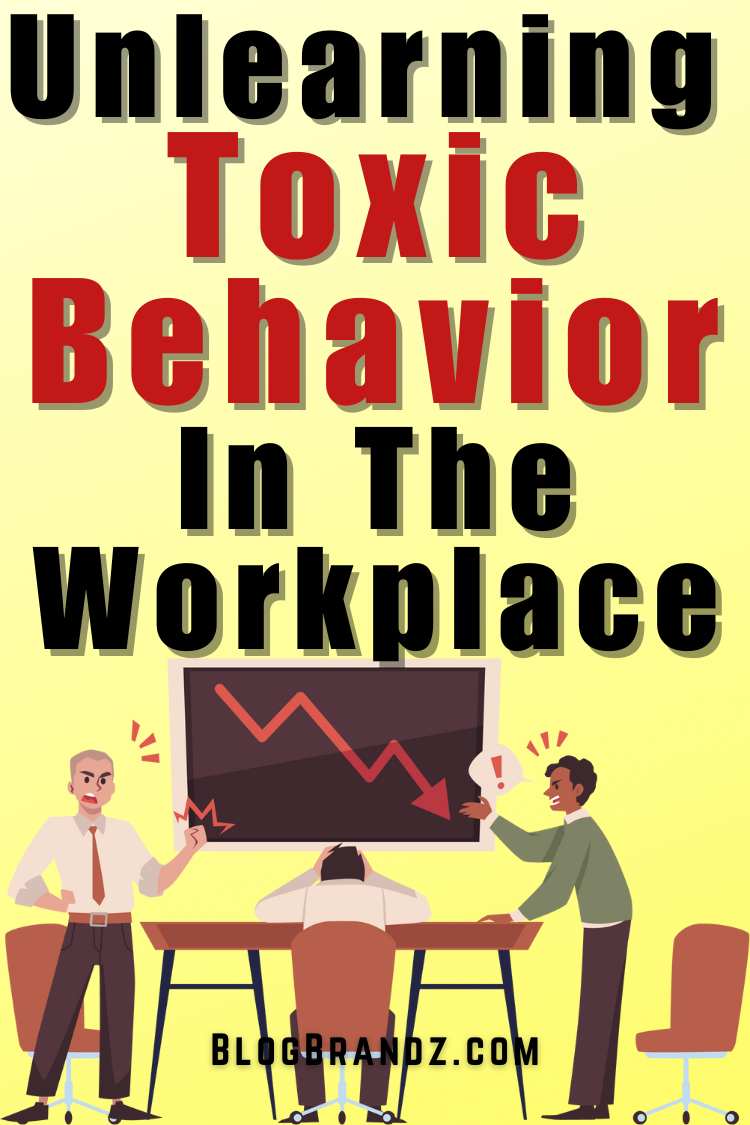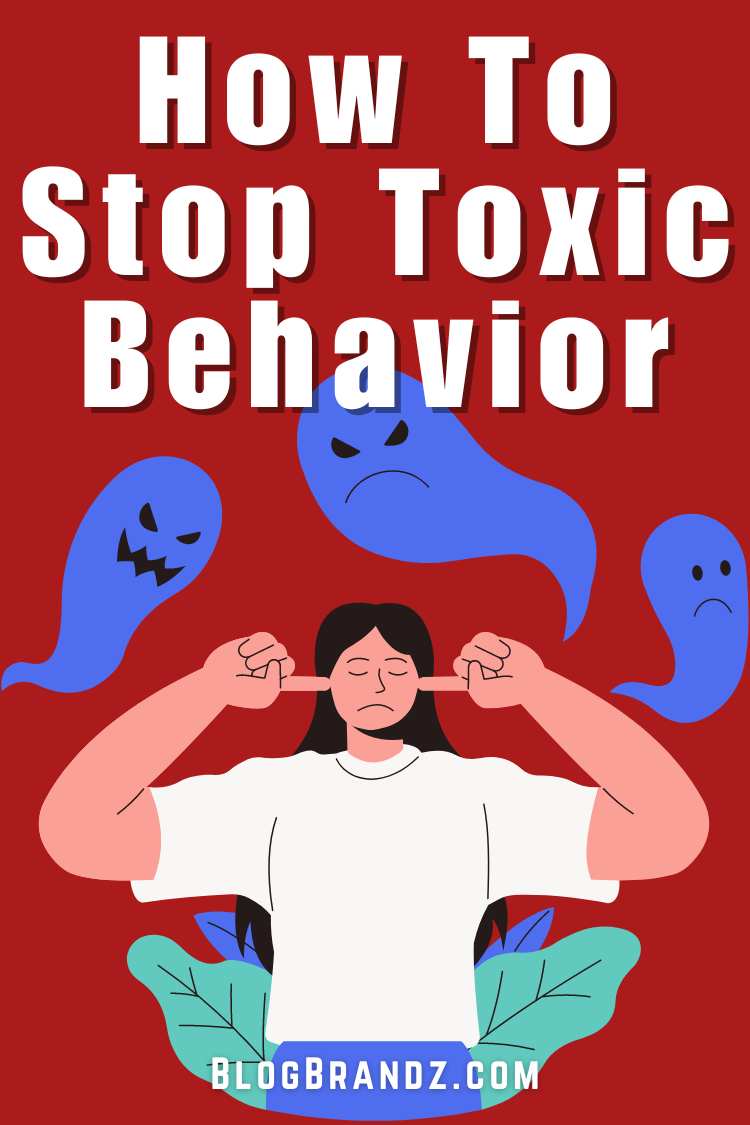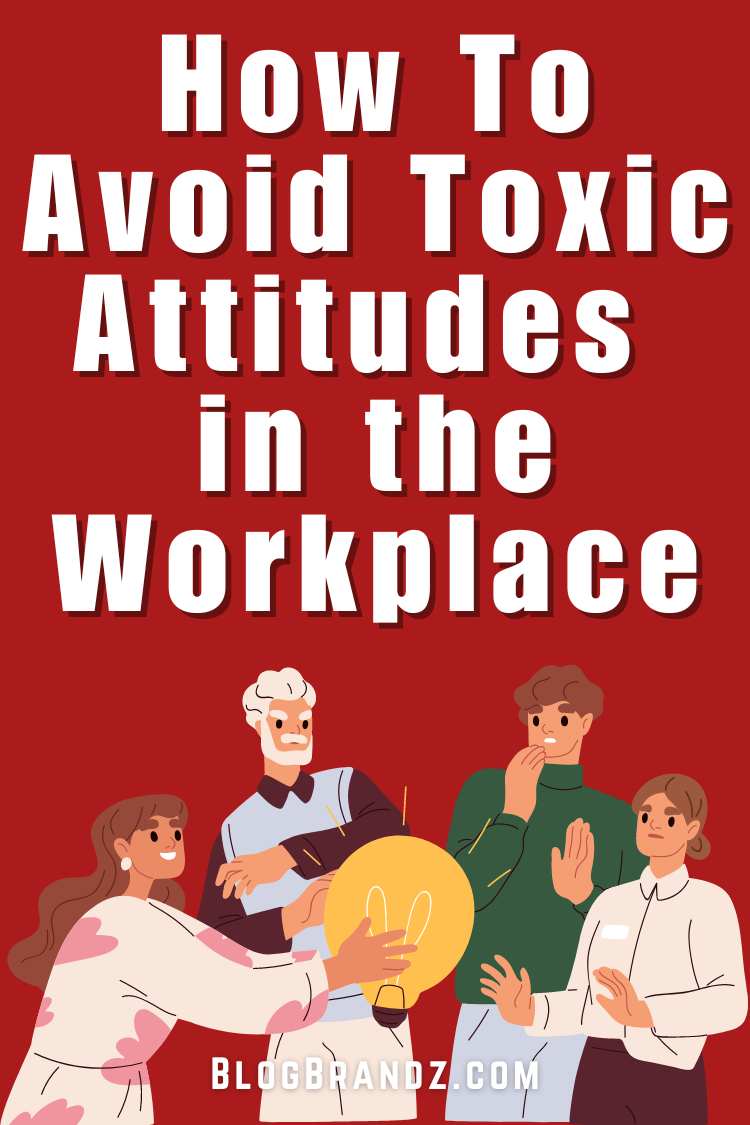
Get tips for unlearning toxic behavior in the workplace to cultivate healthier relationships and foster personal growth for positive career interactions.
Toxic behavior in the workplace is more prevalent than many realize, with studies showing that nearly 75 percent of employees report experiencing it at some point in their careers.
This pervasive issue hampers team morale, personal well-being, and relationships and has far-reaching consequences on individual career prospects.
Research indicates that toxic environments can lead to decreased productivity, increased absenteeism, and heightened stress levels, ultimately affecting job satisfaction and performance.
Employees trapped in toxic situations often feel undervalued and struggle to advance in their careers, highlighting the urgent need to address and eliminate such behaviors for healthier, more productive workplaces.
It can manifest in various forms and undermine trust, respect, and personal growth. In this article, we will explore toxic behavior in the workplace, its traits, examples, and how to unlearn it.
“The only thing worse than a toxic person is being one.”
Contents
What is Toxic Behavior?
Toxic behavior refers to actions and attitudes that are harmful to others and can create an unhealthy environment. Toxic behavior in relationships can lead to emotional distress, low self-esteem, and conflicts.
Defining toxic behavior involves recognizing actions that manipulate, belittle, or create hostility among individuals. Here are some examples of toxic behavior that can be found in various settings:
- Toxic behavior in relationships
Constantly belittling a partner’s achievements or resorting to insults can create a toxic environment. In romantic relationships, this toxic behavior undermines self-esteem and can lead to emotional abuse.
When one partner consistently puts down the other, it can create a power imbalance and foster resentment. Over time, the affected individual may feel trapped and lose confidence, further perpetuating the cycle of toxicity.
Healthy relationships thrive on mutual respect, understanding, and support; recognizing and addressing toxic behavior is vital for maintaining emotional well-being.
- Toxic behavior in the workplace
Gossip, spreading rumors, or undermining colleagues can lead to a hostile work environment, affecting team dynamics and productivity. Such behavior creates an atmosphere of fear and distrust, where employees feel compelled to watch their backs rather than collaborate.
Over time, this toxic behavior can result in high turnover rates, decreased morale, and a decline in overall performance. Organizations must actively foster a positive work culture by promoting open communication, accountability, and respect among employees to mitigate the impact of toxic behavior.
7 Toxic Attitudes & Toxic Behavior Traits
What is considered toxic behavior? Understanding toxic behavior traits is essential for identifying and addressing them. Some common toxic attitudes include:
#1. Deflecting blame
Individuals exhibiting toxic behavior often refuse to take responsibility for their actions, instead blaming others for their shortcomings or mistakes.
This refusal to own up can create tension in relationships, as it shifts the burden of accountability onto others. When someone constantly deflects blame, it can lead to a cycle of frustration, where the affected party feels unrecognized and undervalued.
This behavior stunts personal growth and fosters an environment of distrust, making it difficult for open communication and genuine connection to thrive.
#2. Being defensive
A defensive attitude can hinder open communication and prevent individuals from accepting constructive feedback. When people react defensively, they may dismiss valid concerns or critiques as personal attacks, leading to unresolved issues.
This barrier to honest dialogue can result in a toxic dynamic, as others may feel discouraged from voicing their thoughts. Over time, defensiveness can breed resentment and prevent relationships from evolving and growing.
By fostering a more receptive mindset, individuals can embrace constructive feedback and create a healthier atmosphere for collaboration.
#3. Mind-games and gaslighting
This manipulative behavior creates confusion and self-doubt in others, undermining their sense of reality. Gaslighting involves twisting facts or denying experiences to make someone question their sanity, creating a toxic environment where trust erodes.
Those who engage in mind games often seek control over others, leading to emotional distress and isolation. The long-term effects can be devastating, as victims may struggle with self-esteem and self-worth.
Recognizing these toxic behavior tactics is crucial for self-protection and regaining a sense of agency in relationships.
#4. Passive-aggressiveness
Passive-aggressive behavior often manifests through sarcasm, silent treatment, or backhanded comments, which can confuse others about the true emotions at play.
Indirect expressions of anger or frustration hinder clear communication. They mask underlying issues that need to be addressed, can create misunderstandings, and prevent the resolution of conflicts.
Over time, passive-aggressiveness can lead to resentment and a breakdown of trust, preventing meaningful dialogue. Addressing emotions directly fosters healthier interactions and allows for constructive conflict resolution.
#5. Competition and one-upmanship
A toxic need to outdo others can destroy relationships and foster a hostile environment. Colleagues engaged in constant competition may feel the need to prove their superiority, undermining the value of collaboration and teamwork.
This behavior can increase stress and anxiety, as employees may feel pressured to continuously outperform their peers. Over time, one-upmanship can alienate colleagues, friends, and family, creating an atmosphere of hostility instead of support.
Embracing cooperation and celebrating others’ successes can cultivate a healthier, more fulfilling environment for everyone involved.
#6. Negging and sarcasm
Backhanded compliments or frequent sarcasm can chip away at someone’s confidence, causing resentment over time. While often masked as humor, these behaviors can harm self-esteem and relationships.
When individuals rely on negging or sarcasm to communicate, it creates confusion and ambiguity, making it difficult to address real issues.
Over time, this behavior can lead to deeper emotional wounds, eroding trust and connection. Encouraging kindness and direct communication can foster healthier interactions and strengthen relationships.
#7. Victim mentality
Seeing yourself as a victim can hinder your growth and alienate those around you. A victim mindset fosters a sense of helplessness, preventing you from taking responsibility for your actions and choices.
Over time, this behavior can lead to frustration and resentment from friends, family, and colleagues, as they feel unable to support someone who constantly blames external factors.
By shifting from a victim mentality to an empowered perspective, you can embrace responsibility, paving the way for personal growth and healthier relationships.
How to Stop Toxic Behavior in the Workplace
Unlearning toxic behavior is vital for cultivating healthier relationships in both personal and professional environments.
This transformative journey requires dedication, self-awareness, and actionable strategies. Here are some tips to identify and replace harmful patterns with healthier habits while stopping toxic behavior.
#1. Develop self-awareness
Recognizing toxic attitudes in oneself is the first step toward meaningful change. This requires honest reflection on behaviors, triggers, and patterns that contribute to toxicity.
Journaling can be an effective method for self-exploration, as can seeking feedback from trusted and trained counselors.
By becoming more self-aware, you can better understand how your actions impact others, paving the way for healthier interactions. This awareness is essential for personal growth and fostering a positive environment for yourself and those around you.
Resources:
#2. Take accountability
Taking responsibility for one’s actions fosters trust and respect in relationships. Acknowledging mistakes is crucial for growth, as it allows you to learn from your experiences and make amends.
When you embrace accountability, you lay the foundation for open dialogue, making conflict resolution easier. By actively engaging in self-reflection and recognizing how actions impact others, you can build stronger relationships based on mutual respect and understanding.
Resources:
#3. Practice mindfulness
Incorporating mindfulness exercises into your daily routine can significantly enhance self-awareness. Mindfulness fosters thoughtful responses instead of impulsive reactions, leading to healthier interactions.
Techniques such as meditation, deep breathing, or yoga help you become more attuned to your thoughts and emotional triggers. Start with short sessions and gradually increase the duration. Focus on observing your thoughts without judgment and returning to the present moment when distractions arise.
Resources:
- Change Your Mindset: Toxic Thought Meditation Course
- Free Mindfulness Workshops & Courses for Mindful Living
- How To Practice Mindfulness: Learn Mindfulness Meditation
#4. Encourage open communication
Creating an environment where individuals feel safe to express their thoughts and feelings can reduce misunderstandings and foster collaboration.
Encouraging transparency allows for more authentic connections to improve relationships and teamwork. Open communication helps address potential conflicts before they escalate, promoting a culture of understanding and respect.
By actively listening to others and valuing their perspectives, you can cultivate a supportive atmosphere that fosters healthy interactions.
Resources:
#5. Set healthy boundaries
Establishing personal boundaries is crucial for protecting against toxic behavior from others. Boundaries are guidelines for how we expect to be treated and what behaviors are unacceptable.
“You teach people how to treat you by what you allow, what you stop, and what you reinforce.”
Communicating these boundaries clearly is essential for maintaining healthy relationships and ensuring mutual respect. Setting limits can also help recognize your own needs and prioritize self-care, creating a foundation for healthier interactions and emotional well-being.
Resources:
#6. Seek constructive feedback
Identify trusted individuals in your life — friends, family, or colleagues — who can provide honest feedback about your toxic attitudes. Approach them with specific questions about any harmful patterns they may have noticed.
Be open to their perspectives and avoid becoming defensive during these discussions. Their insights can help you recognize blind spots and guide your efforts to unlearn toxic behaviors.
#7. Seek professional help
Therapy or counseling can provide essential tools for unlearning toxic behaviors and developing healthier patterns. Professional guidance can help you identify the root causes of your toxic tendencies and develop effective coping strategies.
Through therapy, you can gain valuable insights into your behavior, fostering self-awareness and personal growth. Seeking support promotes healing and will empower you to create healthier relationships in your personal and professional life.
#8. Repeat positive affirmations
Create a list of positive affirmations that resonate with you to combat negative self-talk. Examples include, “I am worthy of love and respect,” and “I choose to respond with kindness.”
Repeat these affirmations daily, especially when you catch yourself falling into toxic patterns. Over time, they can help reshape your mindset and reinforce healthier behaviors.
Resources:
- How to Overcome Negative Thoughts and Feelings
- Stop Negative Thinking Using Strategic Affirmations
- 10 Good Life Habits to Rewire Your Brain for Positivity & Success
#9. Invest in personal development
Take proactive steps toward personal growth by seeking out resources that promote self-improvement. This could include reading books or articles on emotional intelligence, conflict resolution, and healthy communication.
Attend workshops or seminars on personal development and engage in online courses that teach skills like assertiveness and empathy. Continuous learning builds the tools for overcoming toxic behaviors and enhancing interpersonal skills.
Resources:
- Success & Hidden Power: Confidence to Handle Toxic People
- Emotional Intelligence: Master Anxiety, Fear & Emotions
- Esther Perel MasterClass on Relational Intelligence
#10. Create a growth action plan
Develop a structured plan for your personal growth journey. Outline specific goals related to unlearning toxic behavior and track your progress.
Set measurable goals, identify potential obstacles, and celebrate small victories to maintain motivation. A clear action plan provides direction and accountability, making it easier to stay committed to change.
Best Courses for Unlearning Toxic Behavior
These courses on unlearning toxic behavior are essential for fostering personal growth, emotional resilience, and healthier relationships by helping individuals break free from negative patterns and cultivate a positive, empowering mindset.
#1. Esther Perel MasterClass on Relational Intelligence
In this Relational Intelligence MasterClass, renowned psychotherapist Esther Perel teaches the art of meaningful connections. Through her innovative approach to love and relationships, you’ll learn how communication and relational intelligence can help you build deeper personal and professional bonds.
Key lessons include developing self-awareness and empathy, navigating boundaries, identifying roles in relationships, and cultivating intimacy to improve connections in all areas of life, from the bedroom to the boardroom.
Click here to preview Esther Perel’s MasterClass
#2. From Toxic Management to Practical Leadership
From Toxic Management to Practical Leadership teaches leaders to identify and address toxic behaviors, adapt leadership styles, and delegate effectively.
It covers strategies for providing constructive feedback, managing team dynamics, resolving conflicts, and improving emotional intelligence. Leaders also learn to manage time, motivate teams, and navigate toxic workplace environments.
Click here to preview this course
#3. Toxic Managers: How to Navigate Abusive Work Environments
Toxic Managers: How to Navigate Abusive Work Environments equips individuals with the skills to identify toxic managers, understand their motivations, and effectively address abusive behavior.
It focuses on improving communication, avoiding burnout, and navigating challenging environments while fostering resilience. The course empowers participants to avoid workplace bullying and emerge stronger from toxic experiences.
Click here to preview this course
#4. Dealing with Toxic Management as an Employee
Dealing with Toxic Management as an Employee offers practical solutions for handling a difficult or toxic boss. The course helps overcome feelings of helplessness and creates a path toward enjoying work again.
It empowers employees to regain control of their work environment, confront their manager professionally, and foster a positive, supportive atmosphere.
Click here to preview this course
#5. Hidden Power: Confidence to Handle Toxic People
This course, based on over 20 years of Tom Marcoux’s expertise, helps you break free from toxic individuals who drain your energy.
It reveals the secrets to achieving real success and happiness, building genuine confidence, protecting personal energy, and mastering the skills to manage toxic people.
You’ll also learn effective time management, boost self-esteem, strengthen your personal brand, and gain essential marketing skills to attract jobs or clients.
Click here to preview this course
#6. Change Your Mindset: Toxic Thought Meditation Course
This course helps individuals overcome self-sabotaging thoughts and negative patterns by re-wiring the brain for happiness. It offers tools like meditations and coaching to replace toxic thinking with positive affirmations, improving emotional health, sleep patterns, and overall well-being.
Ideal for those dealing with stress, anxiety, or depression, it promotes self-awareness, emotional intelligence, and personal growth to gain control over the mind and enhance resilience.
Click here to preview this course
Unlearning toxic behavior is essential for fostering healthier relationships and a positive environment in the workplace and at home. By recognizing toxic behavior traits, examples, and definitions, you can learn how to stop toxic behavior patterns and create a more positive environment.
This journey takes time and commitment, but with patience and persistence, you can develop self-awareness, practice accountability, open communication, and boundary-setting, to break free from toxic behaviors and cultivate a more fulfilling life.
It’s easier to learn how to avoid toxic attitudes in the workplace when you surround yourself with supportive individuals. Breaking free from toxic behavior patterns enhances your relationships and overall well-being, paving the way for growth in your career or business.
Workplace Relationship Tips & Tutorials
- How to Deal with Bullies at Work
- How To Find a Business Partner for a Startup
- How to Spot Dark Tetrad Personality Traits in the Workplace
- How to Build Good Relationships as a Success-Driven Entrepreneur
- How To Control Your Emotions, Be Resilient & Stay Calm Under Pressure
© 2024, Priya Florence Shah. All rights reserved.
Priya Florence Shah is a bestselling author and an award-winning blogger. Check out her book on emotional self-care for women. Priya writes short stories and poetry and chills with her two-legged and four-legged kids in her spare time.
Discover more from Business & Branding Tips
Subscribe to get the latest posts sent to your email.












